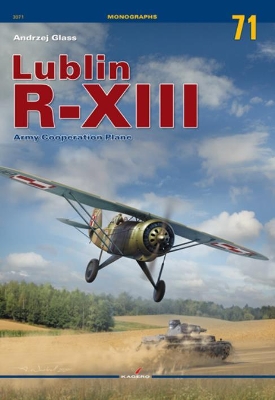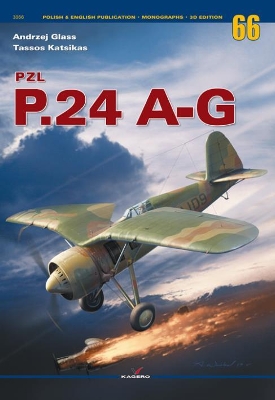Monographs
2 total works
The Lublin R-XIII was the Polish army cooperation plane, designed in the early-1930s in the Plage i Laśkiewicz factory in Lublin. Since 1927, they started working on their own prototypes. Those were designed by J. Rudlicki and his team of more than a dozen people including engineers Marian Bartolewski, Jerzy Dąbrowski, Antoni Uszacki, Janusz Lange, Jerzy Teisseyre, Witold Grabowski, Jaworski and others.
The factory’s first own product was a reconnaissance bomber Lublin R-VIII built in 1928. Its airliner variant, the R-IX, was constructed in a short while. In 1930, they produced a pilot series of 5 Lublin R-VIIIs, 3 of which were converted to seaplanes in 1932. At the beginning of 1929, they performed a test flight of a liaison aircraft prototype designated R-X; a pilot series composed of 5 examples was built in 1931. Prototypes of the Lublin R-IX airliner (1929) and Lublin R-XI airliner (1930) as well as its improved variant, the R-XVI, failed to meet the requirements of LOT Polish Airlines so the production was not started. However, 5 examples of an air ambulance variant R-XVI were built in 1933-1934. In 1931, they created the R-XII sport aircraft that was not put to use.
The factory’s first own product was a reconnaissance bomber Lublin R-VIII built in 1928. Its airliner variant, the R-IX, was constructed in a short while. In 1930, they produced a pilot series of 5 Lublin R-VIIIs, 3 of which were converted to seaplanes in 1932. At the beginning of 1929, they performed a test flight of a liaison aircraft prototype designated R-X; a pilot series composed of 5 examples was built in 1931. Prototypes of the Lublin R-IX airliner (1929) and Lublin R-XI airliner (1930) as well as its improved variant, the R-XVI, failed to meet the requirements of LOT Polish Airlines so the production was not started. However, 5 examples of an air ambulance variant R-XVI were built in 1933-1934. In 1931, they created the R-XII sport aircraft that was not put to use.
Although built in fewer numbers than the PZL P.11, the PZL P.24 was for a period during the 1930’s the fastest and most heavily armed single-seat fighter in the world. Having acquired early notoriety at the Paris Salon with their innovative wing design, the P.24 represented the ultimate development of the family of fighter planes designed by Zygmunt Pulawski and saw service in the air forces of four countries: Bulgaria, Greece, Romania and Turkey.

